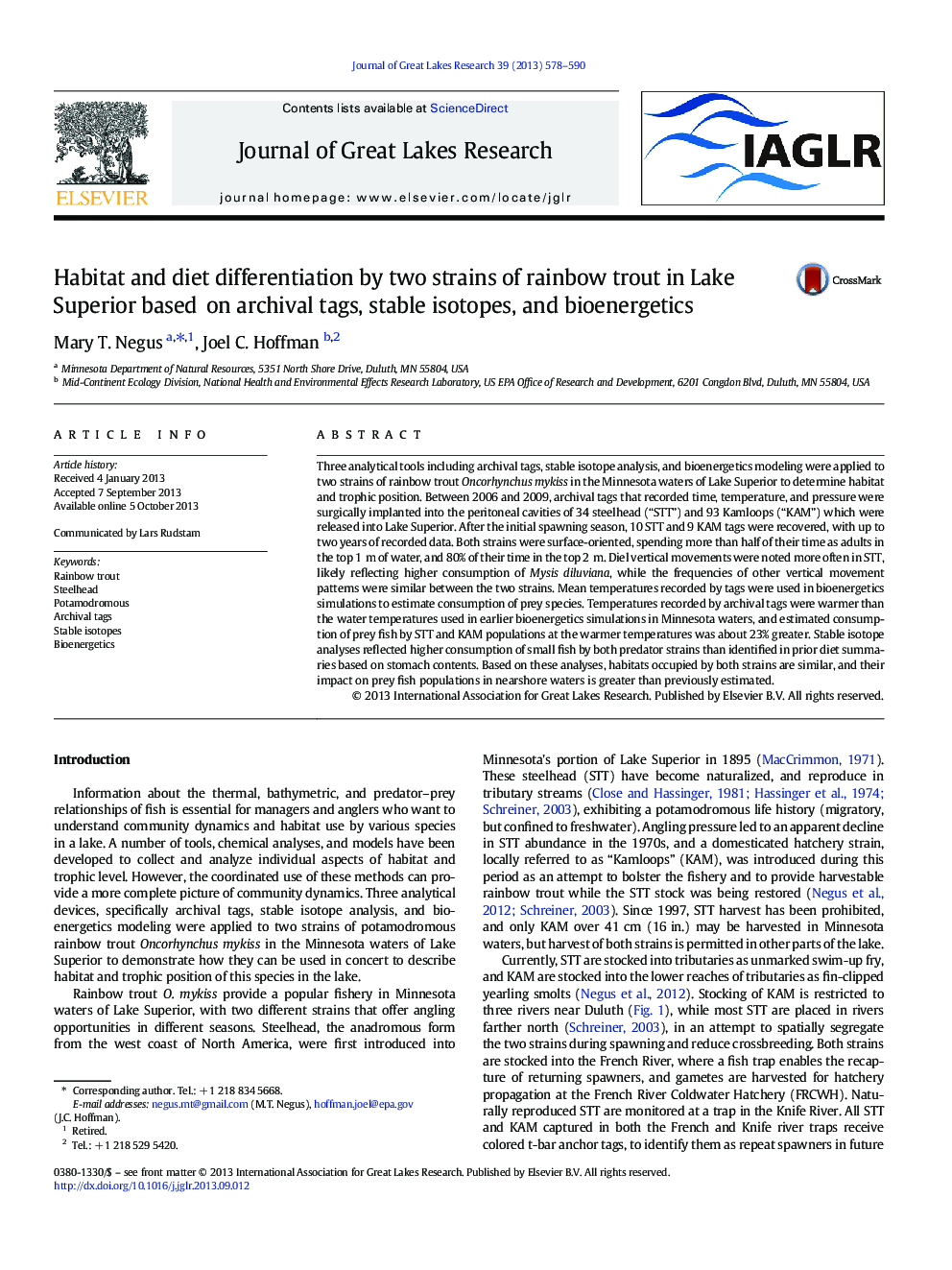| کد مقاله | کد نشریه | سال انتشار | مقاله انگلیسی | نسخه تمام متن |
|---|---|---|---|---|
| 4398505 | 1306693 | 2013 | 13 صفحه PDF | دانلود رایگان |
عنوان انگلیسی مقاله ISI
Habitat and diet differentiation by two strains of rainbow trout in Lake Superior based on archival tags, stable isotopes, and bioenergetics
دانلود مقاله + سفارش ترجمه
دانلود مقاله ISI انگلیسی
رایگان برای ایرانیان
کلمات کلیدی
موضوعات مرتبط
مهندسی و علوم پایه
علوم زمین و سیارات
علوم زمین و سیاره ای (عمومی)
پیش نمایش صفحه اول مقاله

چکیده انگلیسی
Three analytical tools including archival tags, stable isotope analysis, and bioenergetics modeling were applied to two strains of rainbow trout Oncorhynchus mykiss in the Minnesota waters of Lake Superior to determine habitat and trophic position. Between 2006 and 2009, archival tags that recorded time, temperature, and pressure were surgically implanted into the peritoneal cavities of 34 steelhead (“STT”) and 93 Kamloops (“KAM”) which were released into Lake Superior. After the initial spawning season, 10 STT and 9 KAM tags were recovered, with up to two years of recorded data. Both strains were surface-oriented, spending more than half of their time as adults in the top 1Â m of water, and 80% of their time in the top 2Â m. Diel vertical movements were noted more often in STT, likely reflecting higher consumption of Mysis diluviana, while the frequencies of other vertical movement patterns were similar between the two strains. Mean temperatures recorded by tags were used in bioenergetics simulations to estimate consumption of prey species. Temperatures recorded by archival tags were warmer than the water temperatures used in earlier bioenergetics simulations in Minnesota waters, and estimated consumption of prey fish by STT and KAM populations at the warmer temperatures was about 23% greater. Stable isotope analyses reflected higher consumption of small fish by both predator strains than identified in prior diet summaries based on stomach contents. Based on these analyses, habitats occupied by both strains are similar, and their impact on prey fish populations in nearshore waters is greater than previously estimated.
ناشر
Database: Elsevier - ScienceDirect (ساینس دایرکت)
Journal: Journal of Great Lakes Research - Volume 39, Issue 4, December 2013, Pages 578-590
Journal: Journal of Great Lakes Research - Volume 39, Issue 4, December 2013, Pages 578-590
نویسندگان
Mary T. Negus, Joel C. Hoffman,